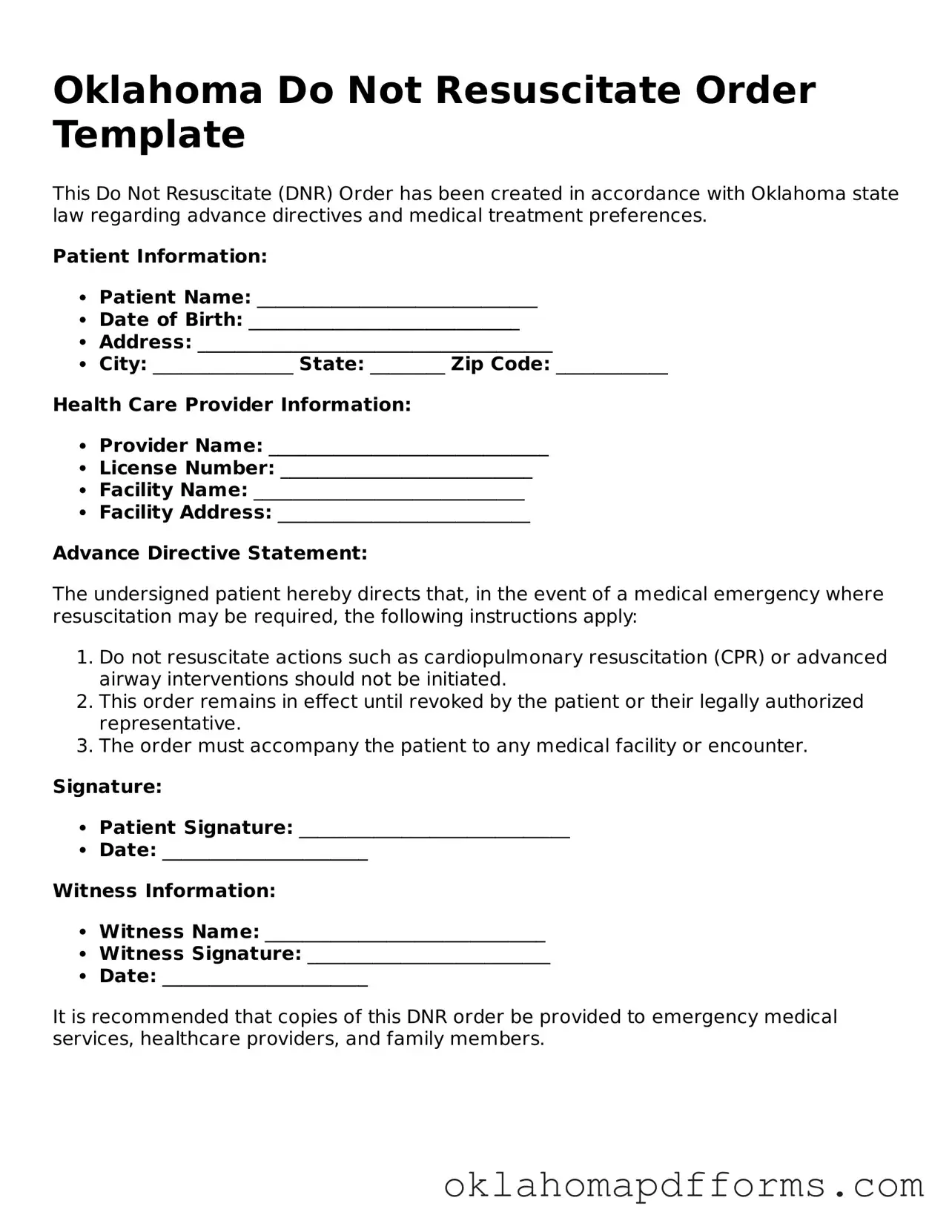What is a Do Not Resuscitate (DNR) Order in Oklahoma?
A Do Not Resuscitate Order is a legal document that instructs medical personnel not to perform cardiopulmonary resuscitation (CPR) if a patient’s heart stops beating or they stop breathing. In Oklahoma, this order is designed for individuals who wish to avoid aggressive life-saving measures in certain medical situations.
Who can request a DNR Order in Oklahoma?
In Oklahoma, a DNR Order can be requested by a patient who is at least 18 years old and is capable of making their own medical decisions. If the patient is unable to make decisions, a legally authorized representative, such as a family member or legal guardian, may make the request on their behalf.
How do I obtain a DNR Order in Oklahoma?
To obtain a DNR Order, a patient or their representative must complete the official Oklahoma DNR Order form. This form must be signed by a licensed physician. Once completed, the form should be kept in an easily accessible location, such as with the patient’s medical records or at home.
What should I do with the DNR Order once it is completed?
After completing the DNR Order, it is important to ensure that copies are provided to all healthcare providers involved in the patient's care. Additionally, the patient or their representative should keep a copy at home and inform family members about its existence.
Will a DNR Order affect other medical treatments?
No, a DNR Order specifically addresses resuscitation efforts only. It does not affect other medical treatments, such as medications, pain management, or comfort care. Healthcare providers will continue to provide appropriate care based on the patient’s needs.
Can a DNR Order be revoked?
Yes, a DNR Order can be revoked at any time by the patient or their authorized representative. To revoke the order, the patient should inform their healthcare provider and ensure that any copies of the DNR Order are destroyed or marked as revoked.
What happens if a DNR Order is not available during a medical emergency?
If a DNR Order is not available during a medical emergency, healthcare providers will typically perform standard resuscitation measures. It is crucial to ensure that the DNR Order is readily available to avoid confusion in such situations.
Are there any legal protections for healthcare providers regarding DNR Orders?
Yes, healthcare providers in Oklahoma are protected from legal liability when they follow a valid DNR Order. As long as the order is properly executed and presented, providers are legally obligated to respect the patient's wishes as outlined in the document.
